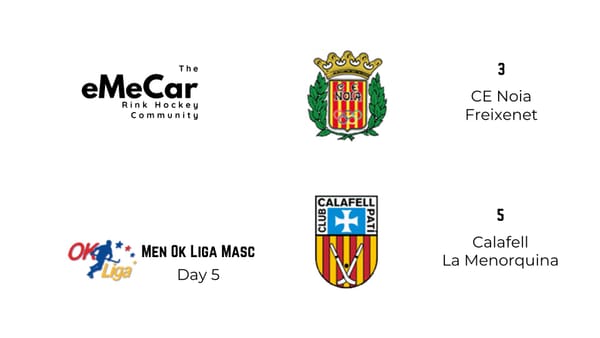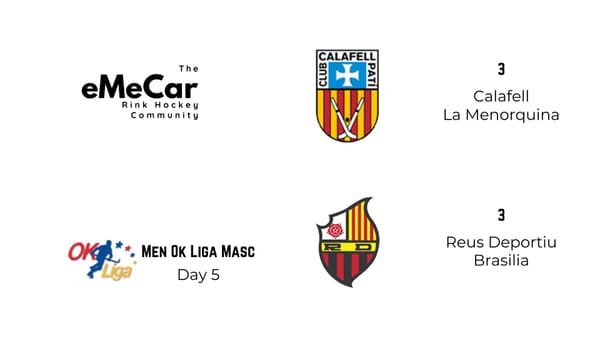Basic offensive concepts
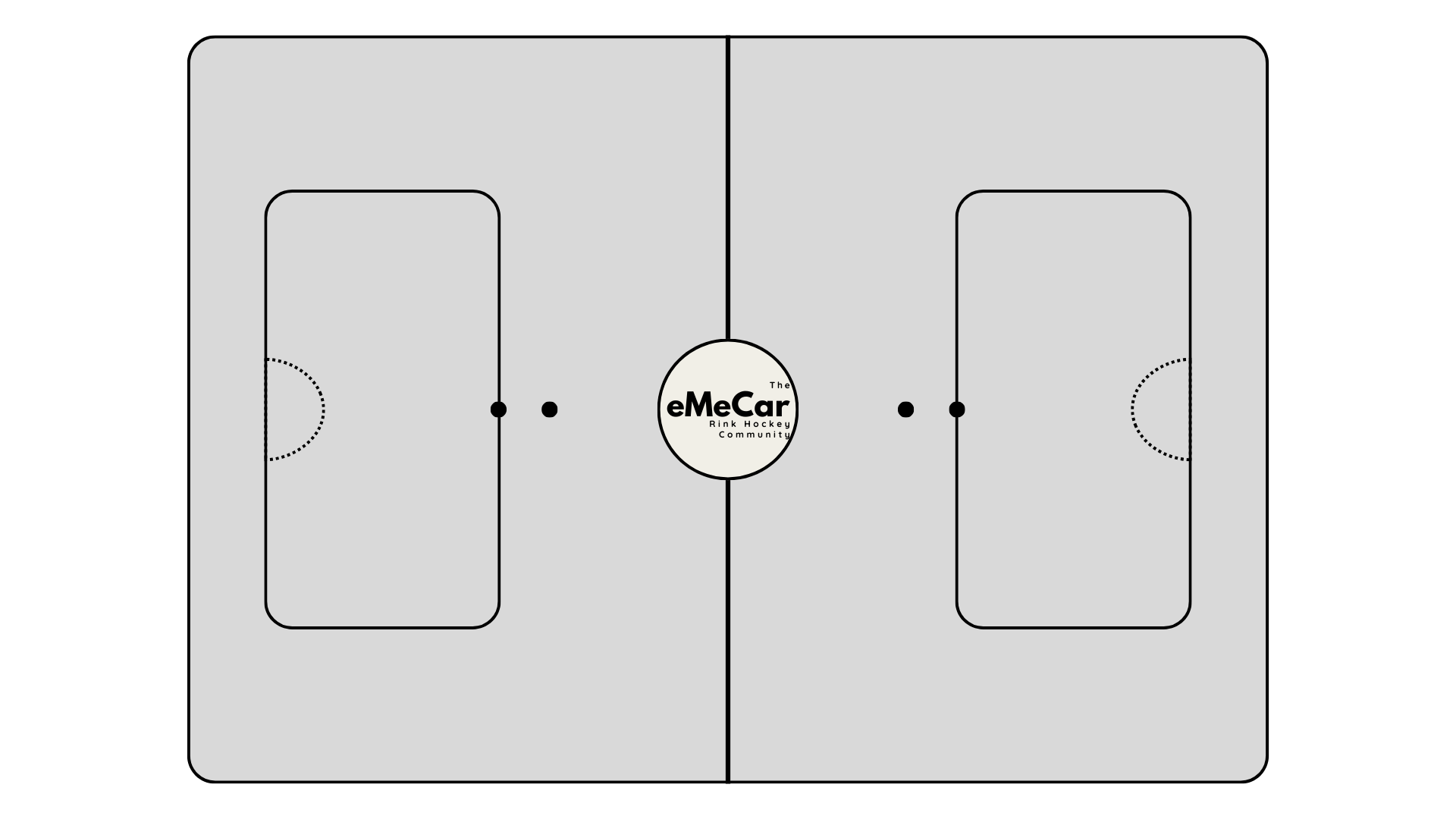
In roller hockey, scoring goals is a constant topic of discussion. However, when we delve into specific areas on the floor that hold significant importance, things can quickly become confusing. Many coaches initiate timeouts with instructions like, "Player 1, position yourself there, and Player 2, move over there..."
Calling all coaches and players! Get ready to elevate your game with our expert insights into roller hockey attack structures.
It's easy to feel lost amid these instructions, I even got lost trying to write them down. To provide clarity, coaches have adopted a numbering system to name these areas, making communication and understanding much simpler. The naming conventions can vary depending on the country, club, and desired level of detail. Here's an introduction to a basic numbering system that's crucial for everyone on the rink: coaches, floor players, and goalies.
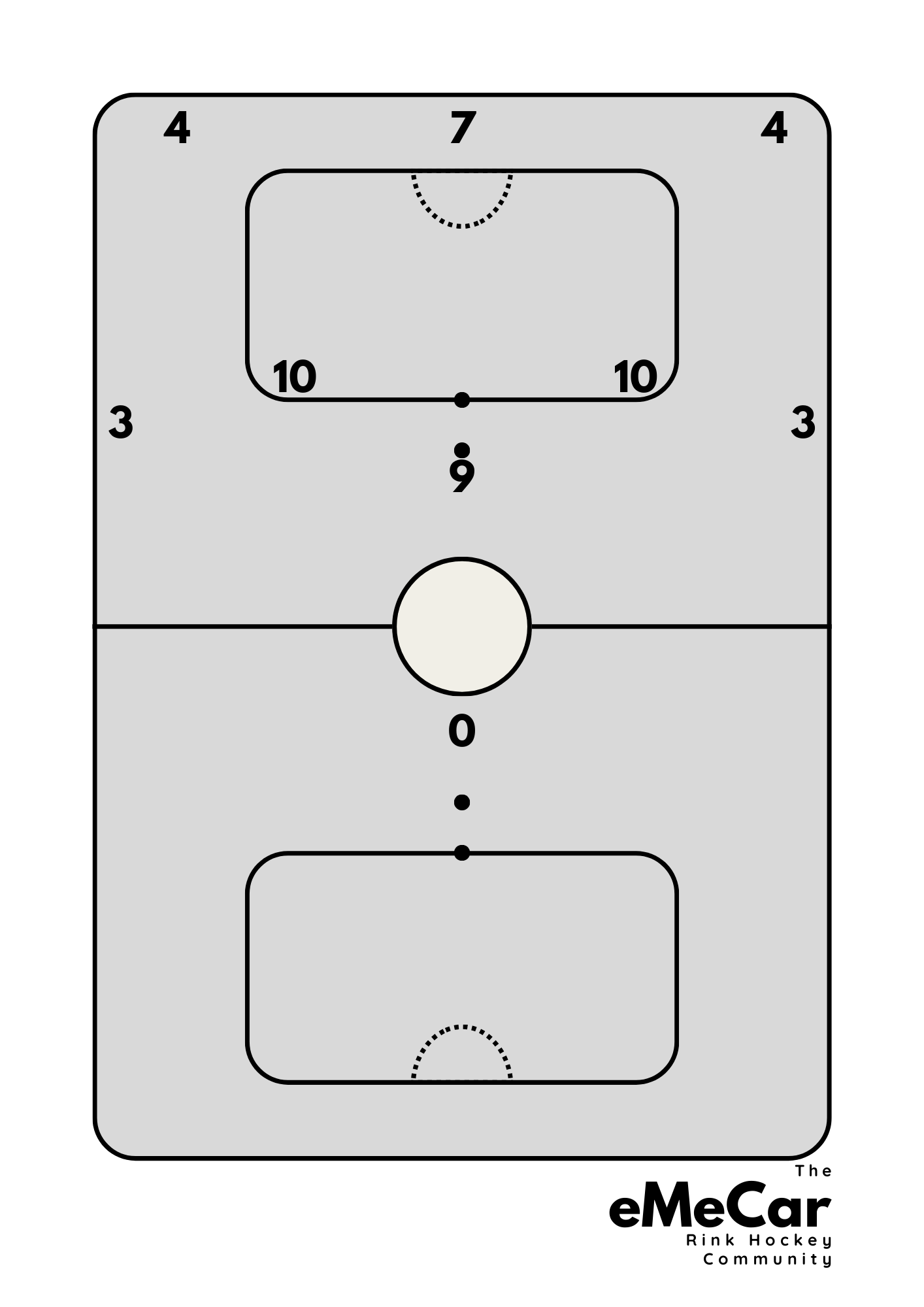
Now that we've identified the areas, let's delve into understanding and mastering a few fundamental aspects common to all attack structures, or at least those I've observed.
Balance
Balance plays a crucial role in any attack structure. One simple method for achieving balance is to divide the floor into three sections, as illustrated in the image below. This approach ensures that we have at least one player in each area, serving two main purposes:
- Maintaining a balanced player distribution avoids overcrowding and promotes smooth gameplay flow.
- It facilitates easier defensive transitions since players are less likely to be caught out of position.
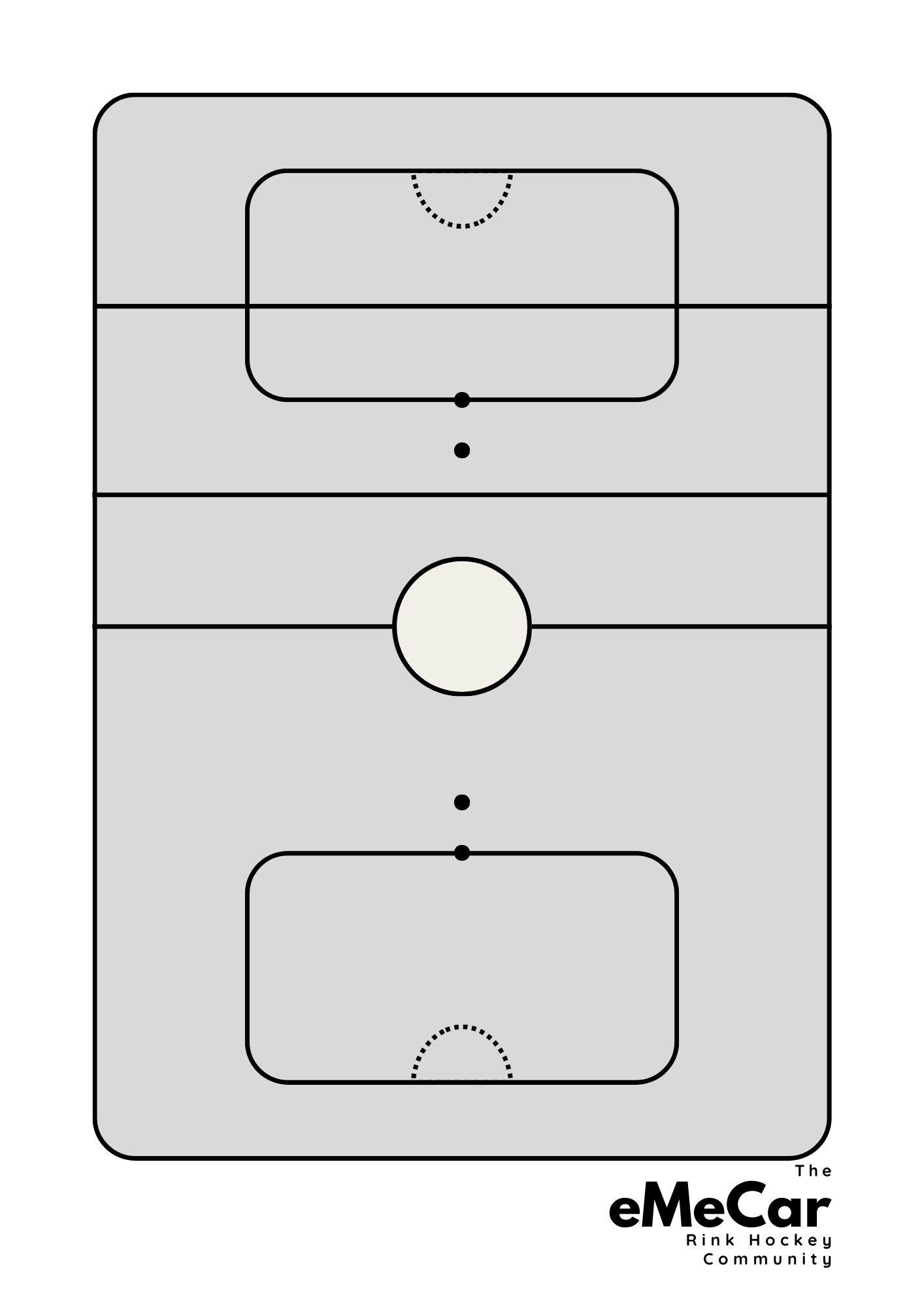
Sides
Another critical consideration during attacks is choosing the side from which to initiate the play. Selecting a side opens up more options and enhances the continuity of the game. The side where the ball player is positioned is termed the strong side, while the opposite side is referred to as the weak side. The big dot represents the player with the ball.
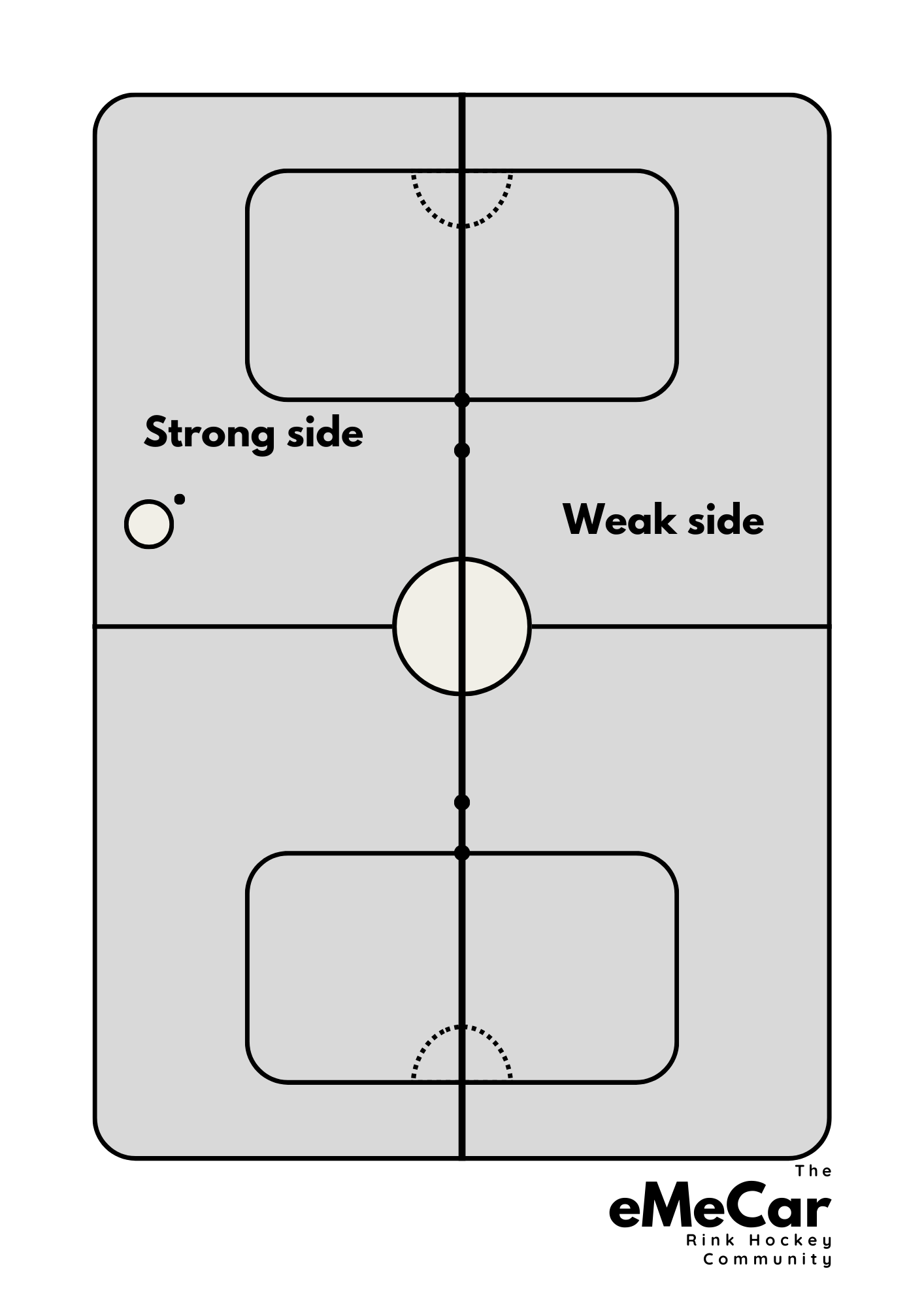
While these concepts may seem straightforward, they are the foundation of a well-structured attack. By adhering to these principles, we can ensure that our attacks flow seamlessly, pose a threat to the opposition, and maintain defensive stability for potential transitions.
Unleash the power of a well-structured attack! Learn how to craft dangerous and safe roller hockey attacks for a winning season.
